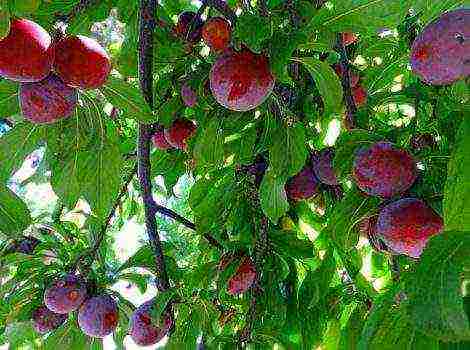Content
- 1 Making artificial diamonds
- 2 Creation of artificial gems
- 3 Growing crystals
- 4 The value of diamonds
- 5 How synthetic diamonds came to be
- 6 Diamond production technologies
- 7 Growing diamond with methane
- 8 Types of artificial diamonds
- 9 Where are synthetic diamonds used?
- 10 How to create a fake diamond at home
- 11 Faux diamond cost
- 12 World leaders
The cultivation of artificial stones is a task that teams of scientists have been struggling with for many years. "Craftsmen" have also long been wondering how to grow a diamond at home. Some have even found ways to get it.
Making artificial diamonds
In nature, diamond is formed under the influence of high temperatures (over 1600 ° C) and high pressure (60-100 thousand atmospheres). Under natural conditions, diamonds are formed for hundreds of thousands or even millions of years. Artificial diamonds, in their physical characteristics completely corresponding to natural ones, can be grown in a few months. For this, it is necessary to recreate the natural conditions of their formation.
At home, no one has yet succeeded in creating an apparatus that maintains such a high temperature and the required pressure. But some "masters" share tips on how you can still do this. For example, it is advised to take a thick-walled pipe, graphite and TNT. Then fold the TNT and graphite into the pipe and weld it. It is alleged that if you blow up TNT and then manage to find the remains of the pipe, then you will find tiny diamonds in them. In practice, the chance of injury is hundreds of times higher than the probability of getting a diamond in this way.
Other "craftsmen" suggest a safer method to create diamonds. All you need is a pencil, a wire, water (preferably liquid nitrogen) and a high voltage source (for example, a welding machine). Take the lead out of the pencil and tie a wire to both ends. Place the lead with the wire in a container with water and freeze (or use liquid nitrogen for this purpose). Take the lead out of the freezer, connect the wires to the welding machine. It is believed that as soon as you pass a strong discharge of current through your structure, the lead will almost instantly turn into a diamond. Of course, this method can be tested for experimental purposes, but you should not seriously count on getting an artificial diamond.
Creation of artificial gems
Unlike diamonds, many other gemstones can be grown at home. To do this, you need to make or buy a Verneuil apparatus and stock up on reagents. To create an artificial ruby, for example, a salt of aluminum dioxide, which has a slight admixture of chromium oxide, is useful. Place it in the burner storage and melt it, watching the "ruby" grow right in front of your eyes in a few hours. Using different salts as reagents, you can get other types of gemstones.
Growing crystals
If you consider the possibility of growing stones as an interesting experience, and not as a way of enrichment, then you can go the other way and grow not stones, but multi-colored crystals from salt, sugar or copper sulfate.
To grow salt crystals, make a saturated solution by adding salt to a glass of warm distilled water until it stops dissolving. To obtain multi-colored crystals, the water can be tinted with food coloring. After that, hang a small crystal of salt over a glass on a string so that it is completely immersed in the solution.The crystal will grow in a few days. Crystals of copper sulfate are grown in the same way.
Crystals are solids, molecules or atoms that form a crystal lattice. It is allowed to grow them with the help of the crystallization process of solutions, vapors or melts, the one that begins with certain conditions , say, oversaturation of steam, supercooling of a liquid.
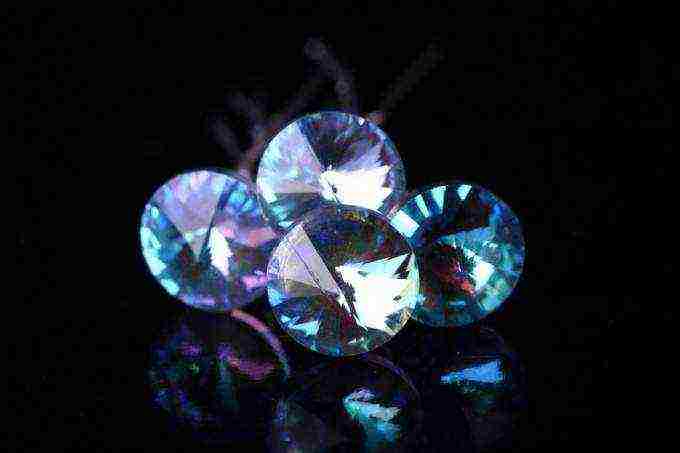
You will need
- - distilled or boiled water;
- - chemical utensils for solution preparation;
- - laboratory filter, one that is allowed to be replaced with blotting paper or cotton wool;
- - a blank sheet of paper.
Instructions
1. To grow a fine crystal in the correct shape, you need a clean solution. In order to prepare it, you will need: distilled or boiled water, chemical dishes for preparing a solution, a laboratory filter, one that can be replaced with a blotter or cotton wool, a clean sheet of paper.
2. It takes a long time for the crystal to grow huge and beautiful. It is a difficult and time-consuming process, one that requires caution and patience. First you need to prepare a small crystal - a seed. As soon as the first crystals appear, you need to prefer those that have a particularly correct shape or that you like more than anyone.
3. Fill the beaker halfway with warm water and add salt in small portions. Stir the solution later than any portion of the substance. Once it stops dissolving, stir again thoroughly. Filter the prepared solution into another glass, where the crystal will grow, and cover it with paper. Closer in a week the crystal will noticeably grow.
4. Care should be taken so that when the solution evaporates, the upper part of the crystal is not exposed to air. It will ruin him. To prevent this from happening, add the solution to the container as needed.
One hundred percent accurate information regarding the authenticity of the stone can be provided to you by an extraordinary expert who knows a lot about his business. But still, there are situations when you urgently need to determine the authenticity in a jewelry store on your own. Without the appropriate equipment, it is unlikely to be able to cope with this, however, there are some tests that will help you at least highlight the hefty obvious fakes. Such tests are based on the fact that real diamonds they can both conduct heat and "crush" the light.
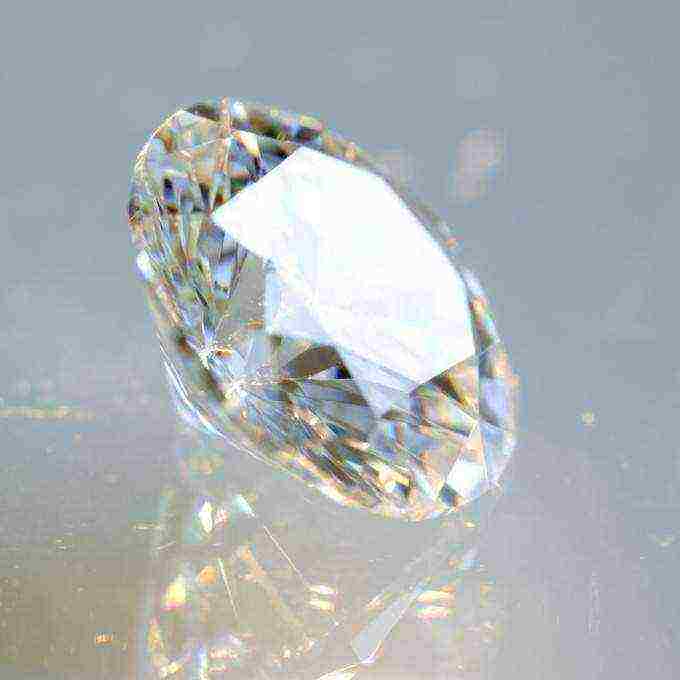
Instructions
1. If you are trying to "test" a rimless stone, try placing it lightly on any printed text. If it is truly a diamond, then you will not see the letters through the stone. Diamond breaks light too powerfully, so it is not suitable as a magnifying glass. But through other, less expensive stones, the symbols will be wonderfully visible.
2. If you illuminate a stone with a light source similar to an LED, then in primitive stones you will see a point of light on the other side of the stone. If it is a genuine diamond, then only a clear halo will be reflected around the rim of the stone.
3. Try breathing on the stone and immediately see if the stone fogs up. All stones will fog up for a moment, but a reliable diamond will invariably remain clean. Keep in mind that the stone, the one called mussanite, also withstands such a test admirably, therefore, in order to exclude an error, go to an excellent jeweler.
4. It is also necessary to discern the stone with an unprecedented observation. Real diamonds may contain small particles of other minerals that have been pressed into the stone during its formation. However, there can be no bubbles in a real stone.
5. Look at the edge of the stone - if they are rounded or worn out, then this is glass. If the stone is hefty clean, without inclusions, then it is also not a diamond, but, rather, everyone, light quartz.
6. It is also important to understand the fact that a reliable diamond cannot be cheap and in no case be tempted to buy a “genuine” diamond for ridiculous money. As usual, a diamond is inserted into a piece of jewelry so that its back is open and accessible for inspection.
7. Do not check the diamond by scratching it on the glass: yes, this stone is strong, but it is absolutely permissible to damage it with this method. But unnatural stones, which are now absolutely safely "grown" in production, will not be easy to distinguish even for an expert.
Related Videos
Probably, the physics and chemistry lessons were especially exciting at school, where different skills were demonstrated. This instruction will not only allow you to refresh your basic skills in these subjects, but also grow excellent crystals ... They will make good souvenirs.

You will need
- - salt,
- - water,
- - Cup,
- - thread,
- - paper.
Instructions
1. Remember that growing crystals is a long process. Please be patient and decide by what date you would like to receive the crystal. On average, it will take you two to three weeks.
2. Decide what substance you will grow your crystal from. A variety of salts (including bath salts) and even sugar will do. Saline crystals they grow more cool, they turn out to be more strong and different in color, therefore it is about them that will be discussed further. So, from traditional table salt you get white, transparent crystals , from copper sulfate - blue-blue, from copper - red. Do not use various unnatural dyes - they will slow down the reaction, change the color of the solution, but not the crystal itself.
3. In the first step of your experiment, you must obtain an intensive solution of edible salt (NaCl). To do this, pour salt into rather warm water (approx. 60 ° C) and stir carefully. It is desirable to use distilled water (if you grow copper sulphate - by all means). When the salt stops dissolving and begins to precipitate, it means that the desired saturation has been reached. An average of 35-40 g of salt is consumed per 100 g of water. Strain the solution to get rid of debris and excess salt.
4. Take the embryo (seed), i.e. a large crystal of the salt you are using. Place it on the bottom of a glass of intensive solution, or fasten it to a string and dip it into the solution. It is allowed to take several embryos.
5. Wrap your container in something warm so that the solution cools down more slowly, and cover with a sheet of paper so that no dust gets into the water. Later, the second, the longest stage in growing crystals begins - waiting.
6. If you did everything correctly, then after 3-4 days the embryo will not dissolve, but will begin to grow slowly. As the water evaporates, the crystal will grow in size. Control the liquid tier. Top up with the newest solution once a week or two if necessary. It is better not to get a growing embryo out of the solution unnecessarily. If you follow all these rules, after a while you will receive a beautiful crystal, one that will become a strange decoration of your home or a beautiful present for your friends.
Related Videos
Since those ancient times, when society first learned about the existence of a transparent colorless stone, which is not inferior in its hardness only to hardened steel, much more water has flowed under the bridge. But despite this diamond has not lost its original value, on the contrary, today virtually everyone knows about the existence of this precious stone and its wonderful beauty. And the truth diamond has a lot of faces, it is not difficult to draw this fascinating stone.
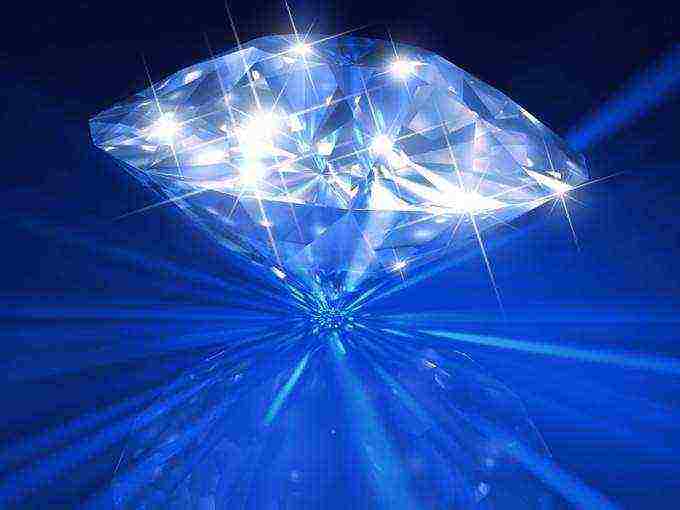
You will need
- - Personal Computer;
- - Photoshop program.
Instructions
1. Start Photoshop on your computer and open the newest document with the following settings: resolution 350 x 350 pixels and a white background. Now use the key combination "Shift + Ctrl + N" to make a new layer and adjust the foreground color on it (gentle blue).
2. Draw a quadrangular shape (you need the Pen Tool).In appearance, this figure should resemble the silhouettes of the future. diamond a: acute angle at the bottom, two obtuse angles on the left and one more acute angle located opposite to them. With the right key of the computer manipulator, click on the resulting figure. After that, select the option "form a selection area" and set the feathering parameters to 0 pxl, confirming the correctness of your actions by clicking "OK".
3. With the help of the Paint Bucket tool fill the shape with the color that was set for the foreground.
4. Select a rectangular area: one side of the rectangle should be a bisector extending from the bottom corner, and the other, parallel to it, should be slightly to the right of the right corner of the shape. Cut off the outlined part: press DELETE or fill this area with white.
5. With the help of the shortcut keys "Ctrl + J" duplicate the layer, and then rotate it horizontally by performing the following sequence of actions: Edit> Transform> Flip Horizontally.
6. Merge the two layers by pressing "Ctrl + E". Begins to draw diamond .
7. To create a new layer, press the following key combination: Shift + Ctrl + N. In its parameters set the foreground color to black. After that, select the drawn diamond , then go to the section "Editing" - "Stroke" and click "OK".
8. Make a new layer and with the help of the Pen tool draw a horizontal line with two lines, and later fill this area with black.
9. Make a new layer and, using the Pen, draw the first vertical line with two lines. After that, choosing "Form Selection", fill the vertical line with black color. Similarly draw the second vertical line and highlight it with black colors.
10. Open the newest layer. Edit the parameters in it, setting the foreground color to white. After that take a brush (parameters 200 px) and give diamond u shine.
11. Delete the white layer and merge all layers by pressing the key combination "Ctrl + Shift + E". Our diamond ready!
Related Videos
Note!
Save the metamorphosis you have made!
Helpful advice
Duplicate the drawn diamond several times, continuously opening the newest layer, and resize the diamond. Place these stones in different places and with different angles. Gradually filling out the document, it is allowed to draw a diamond wallpaper.
Diamond - this is an expensive stone, the most precious of all. In nature, it occurs as a mineral, the distinguishing feature of which is its exceptional hardness. Diamond jewelry has been and remains the most coveted. Only an expert in gemology or a specialist in jewelry art can verify the authenticity of this stone. However, if you need to buy a diamond without involving experts, use several tests to verify its authenticity.
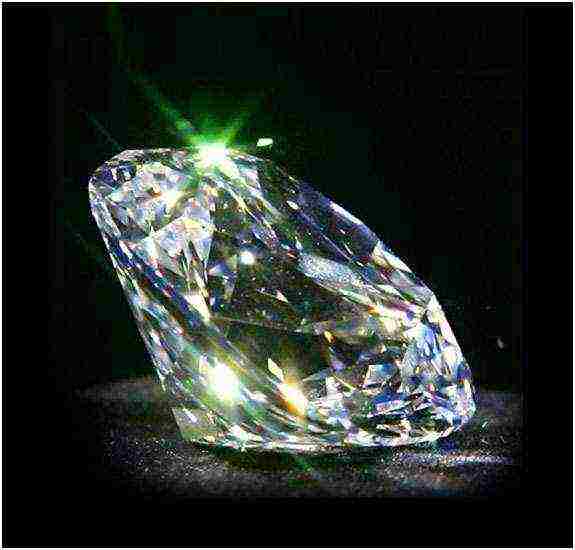
Instructions
1. Submerge the stone in clean water. With the help of this test, it is allowed to determine the integrity of the diamond. If the upper part of the stone is reliable, and the lower part is a fake, then the place where these parts join will be visible in the water.
2. Observe the brilliance of the diamond. It should shimmer with shades of gray. If it sparkles with all the colors of the rainbow, then it is a low quality stone or a fake.
3. Breathe on the rock. A genuine diamond will not become cloudy, and a fake will “fog up” for a few seconds.
4. Carefully rub the diamond with sandpaper. If in the process there are scratches, then this is a fake. However, such paper should not include diamond chips; on the contrary, it is allowed to spoil the stone.
5. Weigh the stone. Zirconium, which is often passed off as a diamond, is significantly heavier than a gemstone. You can use this verification method if you have a chart that shows the correspondence between size and weight in grams or carats.
6. If an expensive stone is in a setting, then check how it corresponds to the rank of the stone. A trustworthy diamond does not fit into an inexpensive setting. It must have a stamp indicating the quality of the metal.
7. You can also test the authenticity of the stone in a laboratory setting. Put the diamond under UV light. A bright blue glow indicates quality. Real diamonds are not visible in X-rays. The materials from which the counterfeits are made have some degree of impermeability to such radiation.
8. If you are not sure that even with the help of the test system you can distinguish a genuine diamond from an unnatural one, contact a qualified expert. There are different ways to identify natural and unnatural stones, which are close to natural in chemical composition.
Note!
During the growth of the main crystal, other crystals may appear and grow in the solution, which must be removed at least once every two weeks.
Helpful advice
It is better to filter the solution through a laboratory filter, but if it is not there, then it is allowed to use a blotter or cotton wool. The denser it is, the cleaner the liquid will be.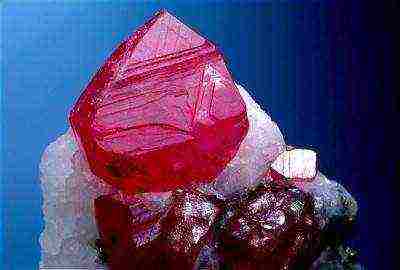
In terms of their physical properties and chemical composition, synthetic precious stones practically do not differ from natural ones. Not all items sold in jewelry stores contain natural stones. And this is quite normal. Consider how to open your own ruby crystal growing business at home.
The content of the article:
- Growing with limited salts
- Auguste Verneuil method
- Determining the competition in this area
- We register home production
- Promotional activities
- A detailed method for growing crystals at home!
The main problem is that most natural stones do not have all the necessary characteristics to show off in jewelry. Stones obtained in factory or laboratory conditions have almost the same characteristics. In addition, the synthetic production of jewelry is cheaper than the extraction of natural jewelry in deep and life-threatening mines.
Growing with limited salts
Potassium alum is suitable for this method. It is best to grow copper sulfate crystals at home. They do not grow well from regular salt. But copper sulfate is easy to buy, and very beautiful blue artificial gems grow from it.
1. Preparing the container. We will make a saturated salt solution in it. Pour in a few tablespoons of salt, fill it with water and stir. Add salt until it stops dissolving. Use hot water to ensure correct proportions. There are solubility curves for different salts. They show how many grams can dissolve in 100 ml of water at a certain temperature.
Solubility curves
2. We filter the solution. This step is very important, especially if you are buying copper sulfate from a garden store. If the solution is dirty, the crystal will grow with defects. We leave the solution for a day so that excess crystals fall out of it. They settle at the bottom of the glass and serve as a seed for us (the main elements on which new ones will grow).
3. We tie the crystal to the fishing line. We wrap the fishing line on a pencil and hang this device on a glass with a saturated solution. Over time, the water evaporates, the saturation of the solution increases. Excess substance that cannot be dissolved is deposited on our product.
4. Once every two weeks, add a saturated solution to the glass. Why do this? Over time, the water evaporates and at some point of growth it will not be enough and growth will stop.
Important! The added solution should be at the same temperature as the solution where the crystal grows.If it is the highest, we can spoil everything.
5. After three months we take out the crystal and dry it with a napkin.
6. Cover the product with 1-2 coats of colorless nail polish. This is necessary so that it does not dry out and lose its luster. After drying, the product can be taken by hand.
Here are some wonderful rubies you can grow at home!
Auguste Verneuil method
To obtain ruby in laboratory conditions, an apparatus is used, invented by the French scientist Auguste Verneuil more than 100 years ago. On the Internet you can find information on the method of growing ruby and more simplified equipment of the French scientist, which can be used at home. According to the method of Auguste Verneuil, a ruby crystal weighing 20-30 carats can be grown in 2-3 hours. It should be noted that this method also applies to the production of topaz in various shades (yellow, blue, white and transparent).
Drawing of the Verneuil apparatus
To obtain a product weighing 30 carats, you will need 3 kW * hours of electricity and 3 hours of time. In monetary terms, this will be less than $ 1. For the production of one crystal, 0.2 g of chromium oxide and 6 g of aluminum oxide powder are required, the cost of which will not exceed $ 0.50.
You don't need to be an economist to understand that even a raw crystal is sold to a jeweler and the profit will be very solid. Having pleased your wife with home-grown topaz and rubies, you will receive incomparable psychological "dividends".
Download a detailed description of the Verneuil method
Determining the competition in this area
Having entered any store, you will notice that the prices for jewelry with stones are quite high, despite their synthetic origin, therefore, the market is still very far from saturation. Marketing research shows that in Russia you do not run the risk of facing a lot of competition. Even if several thousand entrepreneurial people are engaged in such a business, they will not make much changes in this market segment.
We register home production
We are cultivating at home. It is not planned to create laboratory conditions. This is a simple mini business. Sales will be carried out through souvenir shops, social media groups. You can create your own website. Our products will be bought for gifts as precious souvenirs. For this option, it is enough to register as an individual entrepreneur.
If you are planning to expand your business and open your own laboratory with the aim of further selling artificial rubies to jewelry factories and shops, open a limited liability company.
Promotional activities
The most important step is to find ways to realize crystals. How to establish a sales market?
1. Contact an advertising agency. Specialists will find ways to interest potential buyers.
2. Create and promote a group or page in social. networks. Invite to friends, be active in groups that sell handmade goods. Additionally, you can create your own website.
3. Go for exclusivity. You can try to negotiate with gift shops for the supply of crystals. Distribute flyers in the city center. Tell your friends about your business.
A detailed method for growing crystals at home!
And this is how synthetic diamonds are grown for industrial purposes.
Diamonds have attracted humanity since ancient times. The extraordinary beauty of these stones has become the reason for their use to create various jewelry. However, later people discovered other useful properties of diamonds - their unique strength and hardness. To meet the needs of production, nature did not create a lot of this material, so people had an idea - to make diamonds artificially.
The value of diamonds
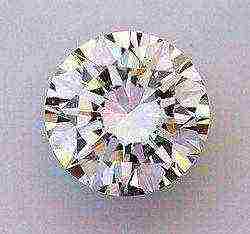
Diamond is considered a unique stone with a rare combination of important characteristics: strong dispersion, high thermal conductivity, hardness, optical transparency, wear resistance. Due to their physical and mechanical properties, diamonds are highly valued not only by jewelry experts, but are also widely used in various industries. So, this gem is used in medicine, optics and microelectronics.
But it is very difficult and quite expensive to fully meet the production needs with pure natural diamonds. For this reason, humanity began to think about how to make an artificial diamond. Synthetic stone had to not only possess the important properties of a real diamond, but also have a more perfect crystal structure, which is very important for high-tech areas.
How synthetic diamonds came to be
The need to create a synthetic stone arose a long time ago. But in practice, it was implemented only in the XX century. Until that time, scientists could not come up with a technology for making diamonds, although they were able to establish that they are relatives with ordinary carbon. And after a few decades, the first synthetic diamond was created, which was obtained from graphite under the influence of high temperature and pressure through a phase transition. It was from this moment that the production of artificial diamonds began, which today are used in many elements of various equipment and tools.
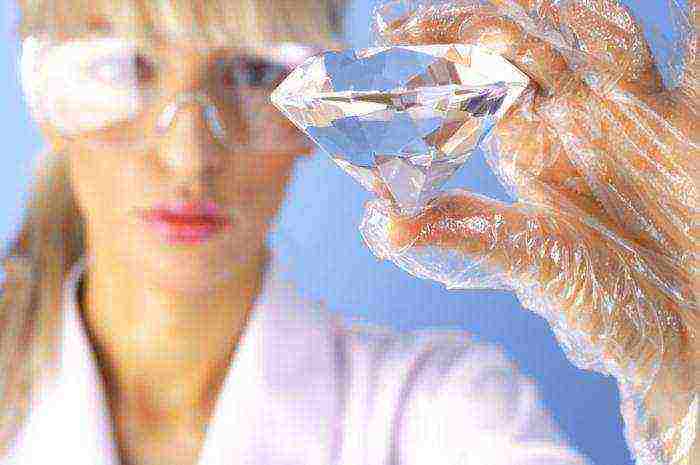
Diamond production technologies
Nowadays, several technologies are used to obtain synthetic stone, each of which has its own characteristics. The most reliable, but most expensive technology is the production of a diamond from crystalline carbon, which is placed in a special press for processing. First, water is supplied to the processed material by powerful pumps. This creates a high pressure. The water then freezes under the action of the refrigerant, causing the pressure to increase up to 10 times. In the last step, the carbon chamber is connected to the electric buses and a powerful current is applied for a few fractions of a second. Under the simultaneous influence of temperature and pressure, graphite is transformed into solid stone. After this phase, the press is defrosted, the liquid is drained and the finished artificial diamond is taken out.
Growing diamond with methane
They also use a simpler technology for the production of synthetic stone - the explosion method, which allows you to build up an artificial crystal under the influence of methane. Very often, the production of artificial diamonds takes place using two technologies. The fact is that in the first case it is possible to obtain the highest percentage yield of diamonds, but they will be very small. The second technology makes it possible to significantly increase the obtained synthetic stone by blowing with methane under the influence of a temperature of about 1100 ºС. The explosion method makes it possible to obtain an artificial diamond of any size.
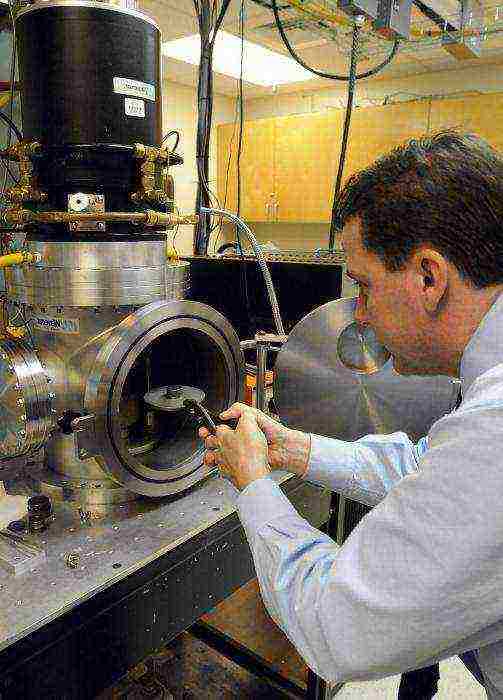
Types of artificial diamonds
Nowadays, many varieties of synthetic diamonds are produced: cubic zirconia, moissanite, rhinestone, ferroelectric, rutile, fabulite, cerussite. The most perfect counterfeit of a diamond is cubic zirconia, or zirconium cube. It is zirconium dioxide. Therefore, many have repeatedly heard the name of an artificial diamond zircon. Although it has nothing to do with natural expensive stone.
Cubic zirconia is characterized by high hardness, high dispersion and refraction. Due to its properties, this stone perfectly imitates a real diamond and is widely used in the jewelry industry. Even experts with the naked eye can hardly distinguish a fake from the original, since they play the same way.
The best quality analogue of diamond is moissanite.It has the same physical properties as natural stone, and even better in terms of optical performance. Its only drawback is that it is inferior in hardness.
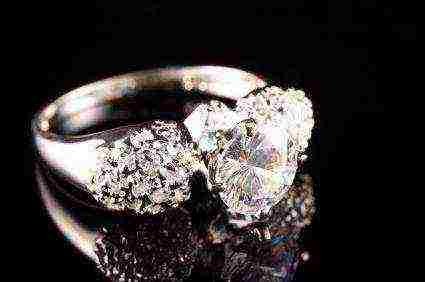
The most popular are rhinestones made of lead glass, consisting of lead oxide. Due to their composition, these stones play amazingly in the light and have a brilliance identical to that of diamonds.
Where are synthetic diamonds used?
Artificial diamond is widely used by jewelry factories to make luxurious jewelry that not only looks beautiful but is also very affordable. Products with fake stones look no worse and wear great.
Also, the cultivation of artificial diamonds is an integral part of the modern industry. On their basis, heavy-duty tools are produced: grinding wheels, diamond saws, polishing discs, chisels, drills, scalpels, knives, various cutters and tweezers. Technique and equipment made of diamond material allow processing the most durable alloys and raw materials. In addition, diamond ensures maximum precision in machines and instruments.
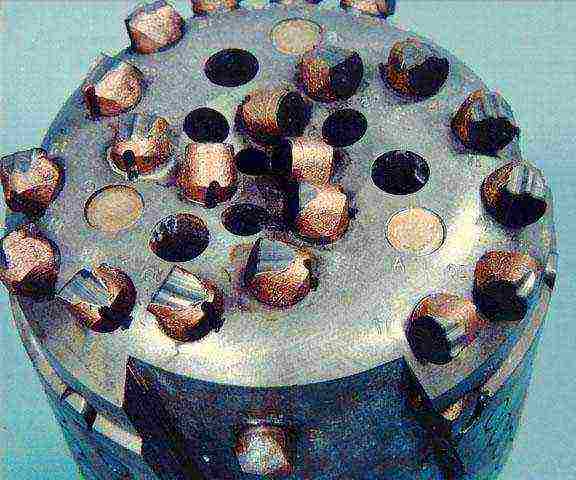
How to create a fake diamond at home
Some experts argue that it is possible to grow synthetic diamonds at home. But making artificial diamonds on your own will take a lot of effort and time. We will tell you how to grow a mineral from salt that looks vaguely reminiscent of a diamond.
So, to create such a stone, you will need boiled water, table salt, chemical utensils, a blank sheet of paper and a laboratory filter. First, prepare a small crystal. To do this, fill the beaker 1/5 part with salt, fill it halfway with warm water and stir. If it has dissolved, then you need to add some more. The salt must be added until it stops dissolving. Then filter the solution into another dish, in which the stone will grow, and cover with paper. All the time you need to control the level of the solution. The stone should not be in the air. If the solution has evaporated, you need to prepare a new one and top up.
People who have done such experiments claim that a homemade artificial diamond should grow noticeably within a week.
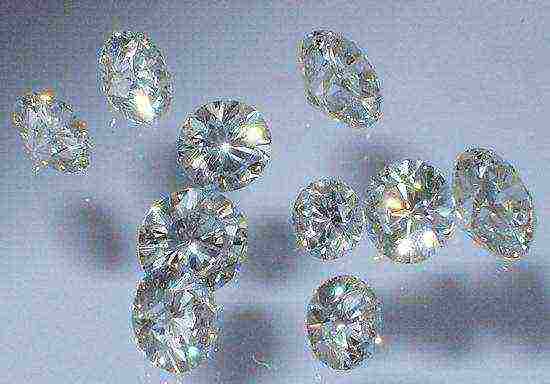
Faux diamond cost
In the modern world, synthetic stones have occupied a separate segment of the jewelry market. The production of artificial diamonds is constantly being improved. Scientists invent new stones that instantly gain massive popularity, while older ones lose demand and gradually disappear from the market. For example, in the middle of the 20th century, artificial rutile was inserted into jewelry to imitate diamonds. Then it was replaced with cubic zirconia. And in the 90s. all previous imitations of the diamond were replaced by moissanite.
Artificial diamond prices vary by size, cut and production technology. Many people mistakenly believe that synthetic stones are ordinary glass and do not see any value in them. But in fact, such diamonds often cost a lot of money, and some of them are quite rare. So, other varieties of artificial diamond may cost more than natural counterparts.
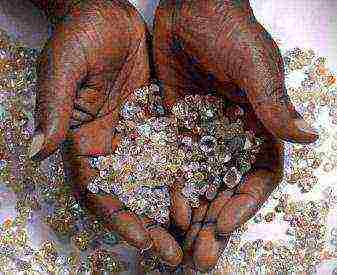
Among synthetic diamonds, cubic zirconias of different colors are considered the most popular. Their average cost per carat in faceted form ranges from 1 to 5 US dollars. The well-known diamond analogue moissanite costs much more - USD 70–150 per carat.
Color is an important factor in the formation of prices for stones. So, the cost of a yellow diamond is $ 40-50 for 0.2 carats, but for an orange-pink stone, depending on the size, you will have to pay about $ 3,000.
World leaders
In recent years, China, Japan, the United States and Russia have been considered the world leaders in the production of synthetic stones.China is developing this direction most actively, constantly inventing new synthesis technologies.

